From chemical raw material manufacturer to pharmaceutical manufacturer
The Otsuka Group began with the establishment of Otsuka Seiyaku Kogyo-bu (Otsuka Pharmaceutical) in Naruto City, Tokushima Prefecture, in 1921 by the founder Busaburo Otsuka (1891-1970). At that time, it was a chemical raw material manufacturer that produced magnesium carbonate (listed in the Japanese Pharmacopoeia) from salt field residues.

The Otsuka Memorial House (first office and laboratory)
In 1946, we started manufacturing intravenous infusion solutions, entered the pharmaceutical field, and in 1951, we launched IV solutions in glass vials. Subsequently, as the demand for IV solutions expanded, we developed a variety of IV solutions, particularly in 1968, we launched Japan’s first plastic container for IV solutions and established a position in the IV industry.
Related page on the site “Research and Development” ▶

1946
Same type of infusion solution as that at the start of IV solution business (The photo is a product from 1948-1950s.)

1951
Glass vial for IV solutions
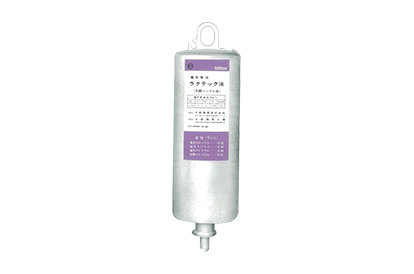
1968
Japan’s first plastic bottle for IV solutions
In addition to the clinical nutrition field, Otsuka Pharmaceutical Factory has been developing a variety of products. In 1953, Oronine Ointment was launched as the first over-the-counter drug by the Otsuka Group.
Oronine history (Link to Oronine brand site)

1953
Oronine Ointment

Enamel signboard featuring Chieko Naniwa
Note: Product photos are generally those at the time of launch. Ethical drugs and other products are listed under the brand name, not under the product name.
Development of IV business worldwide
In 1973, we entered Thailand, which was our first overseas expansion, and in 1974, expanded into Indonesia and Taiwan.
In 1977, we expanded into Egypt, and then in 1981, we established the first joint venture in China as a Japanese pharmaceutical company. In this way, we developed our IV business worldwide.
Today, we operate 16 group companies in the IV business, helping to advance healthcare in other countries.
See the page “Otsuka’s IV solutions spreading worldwide” of “Our Business/Japan and Overseas” for details. ▶

Thai Otsuka Pharmaceutical Co., Ltd.

P.T. Otsuka Indonesia

Egypt Otsuka Pharmaceutical Co., S.A.E.
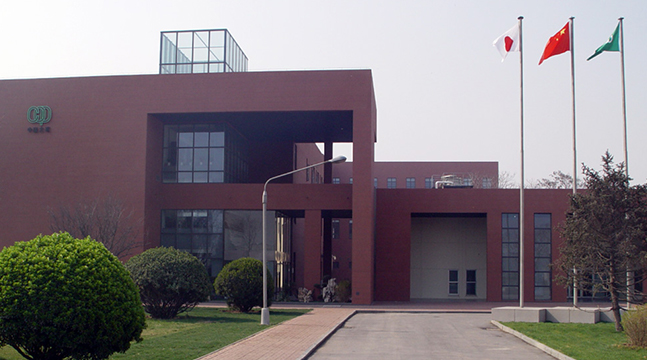
China Otsuka Pharmaceutical Co., Ltd.
Note: Product photos are generally those at the time of launch. Ethical drugs and other products are listed under the brand name, not under the product name.
Evolving Otsuka’s clinical nutrition products
– From developing glucose solutions to developing peripheral parenteral nutrition solutions –
In 1974, we launched our first self-developed product, MARTOS Injection 10%, a disaccharide IV injection. It was an innovative carbohydrate solution that allowed for providing twice as many calories as the conventional 5% glucose solution without raising the blood glucose levels.
Later, in 1979, we developed and launched POTACOL R, a carbohydrate and electrolyte injection, and in 1982, we developed and launched PLAS-AMINO, an injection with glucose and amino acids that progressed from the conventional concept of amino acid solutions.

1974
MARTOS Injection 10%, a disaccharide IV injection

1982
PLAS-AMINO, an injection with glucose and amino acids
PLAS-AMINO has become the first step toward the new field of peripheral parenteral nutrition solution of glucose and amino acids as a single agent, and established the foundation that led to AMINOFLUID, an amino acid, carbohydrate, and electrolyte solution, in 1996, BFLUID, a carbohydrate, electrolyte, and amino acid solution with vitamin B1, in 2006, and ENEFLUID, an amino acid, glucose electrolyte, fat, and water-soluble vitamin injection, in 2020.

1996
AMINOFLUID,
an amino acid, carbohydrate, and electrolyte solution

2006
BFLUID,
a carbohydrate, electrolyte, and amino acid solution with vitamin B1
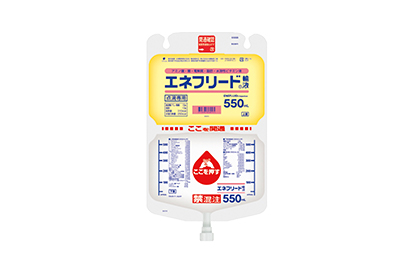
2020
ENEFLUID,
an amino acid, glucose, electrolyte, fat, and water-soluble vitamin injection
Note: Product photos are generally those at the time of launch. Ethical drugs and other products are listed under the brand name, not under the product name.
Innovative container development
We pursued better containers and launched an innovative twist-off type plastic ampule in 1977. Using this technology, we developed a piggy bottle (50-100 mL smaller container) and launched it in 1984.

1977
Twist-off type plastic ampule

1984
Piggy bottle
In parallel with the development of small-volume infusion containers, we launched single-bag formulations in 1986 and double-bag formulations in 1994.
Also we launched the “triple- bag formulations” with double chambers and a mini chamber in 2004, followed by the world’s first “quad (four-chamber) bag formulations” in 2009 with the upper and lower soft bags plus two mini chambers.
Related page on the site “Research and Development” ▶

1986
Single-bag formulations

1994
Double-bag formulations

2004
Triple-bag formulations
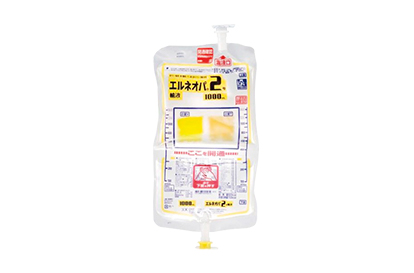
2009
Quad-bag formulations
In 1995, we developed Otsuka multi-chamber bag system, in which antibiotics and dissolving agents can be prepared aseptically with a single press. In 1996, we launched the world’s first antibiotic kit product that uses the technology.
Related page on the site “Research and Development” ▶

1996
Antibiotic kit product
In 2006, we launched a prefilled syringe that can be used aseptically with easy operation and reduces labor in medical practice.

2006
Prefilled syringe
Note: Product photos are generally those at the time of launch. Ethical drugs and other products are listed under the brand name, not under the product name.
Evolving Otsuka’s clinical nutrition products
– Development of TPN solutions and enteral nutrition products –
In 1986, we launched TRIPAREN, a TPN electrolyte solution containing complex carbohydrates (GFX), as our first TPN solution. We have made it possible to increase the efficiency of using the administered amino acids as a basic solution for TPN solution with different carbohydrates formulated originally.
In 1988, we launched AMIPAREN, a 10% amino acid solution. Amino acid formulation in compliance with the TEO formulation* is still the basic formulation for nutritional solutions.
* Standards for amino acid formulation proposed in 1980 by the Study Group of Amino Acid Solution, which was established in 1976 and consisted of seven domestic universities.

1986
TRIPAREN,,
a TPN electrolyte solution containing complex carbohydrates (GFX)

1988
AMIPAREN,
a 10% amino acid solution
TPN solutions continue to evolve afterwards. We launched AMINOTRIPA, an amino acid, carbohydrate, and electrolyte solution for TPN, in 1994, NEOPAREN, a formulation containing glucose, electrolytes, amino acids, and multiple vitamins for TPN, in 2004, and ELNEOPA, a TPN formulation containing glucose, electrolytes, amino acids, multiple vitamins, and trace elements, in 2009.

1994
AMINOTRIPA,
an amino acid, carbohydrate, and electrolyte solution for TPN

2004
NEOPAREN,
a formulation containing glucose, electrolytes, amino acids, and multiple vitamins for TPN

2009
ELNEOPA,
a TPN formulation containing glucose, electrolytes, amino acids, multiple vitamins, and trace elements
As for clinical nutrition products other than IV solutions, we launched TWINLINE, an elemental diet preparation, in 1993, RACOL, a low residual diet preparation, in 1999, and ENORAS, a liquid for enteral use (for feeding tube and oral administration), in 2019.

1999
RACOL,
a low residual diet preparation
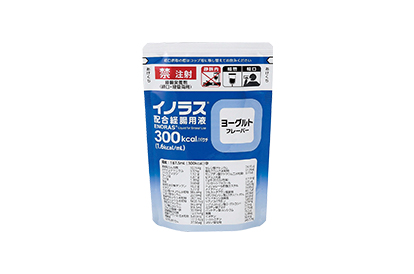
2019
ENORAS,
a liquid for enteral use (for feeding tube and oral administration)
Note: Product photos are generally those at the time of launch. Ethical drugs and other products are listed under the brand name, not under the product name.
Product development in a variety of fields
Taking advantage of the technology developed through IV solution development, in 2001, OS-1, an oral rehydration ion beverage, was launched based on the concept of oral rehydration therapy proposed by the World Health Organization (WHO).
In 2004, we obtained approval from the Ministry of Health, Labour and Welfare for labeling and created the first category of oral rehydration solution as a food for persons with medical conditions.
Related page on the site “Research and Development“ ▶
For more information about medical foods including OS-1, see the page “Product.” ▶

2001
OS-1,
oral rehydration ion beverage
We launched Olanedine, a new external-use antiseptic―the first in Japan in more than 50 years in 2015.
In addition to bottled products, we have improved an antiseptic applicator commonly used at medical institutions in the United States with our own technology and developed it as Japan’s first applicator-type product that integrates a disinfectant and an applicator.

2015
Olanedine,
an external-use antiseptic
We launched VISCOCLEAR, gel to secure the visual field that is used for the endoscope for natural opening as the first medical device in Japan that has the effect of securing a view of the gastrointestinal tract endoscope in 2020.

2020
VISCOCLEAR,
gel to secure the visual field that is used for the endoscope for natural opening
Note: Product photos are generally those at the time of launch. Ethical drugs and other products are listed under the brand name, not under the product name.






